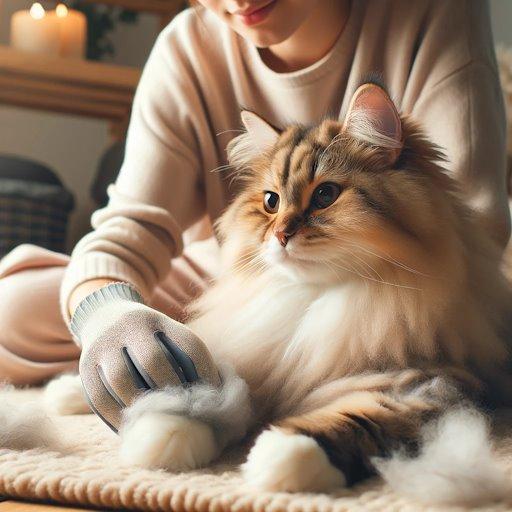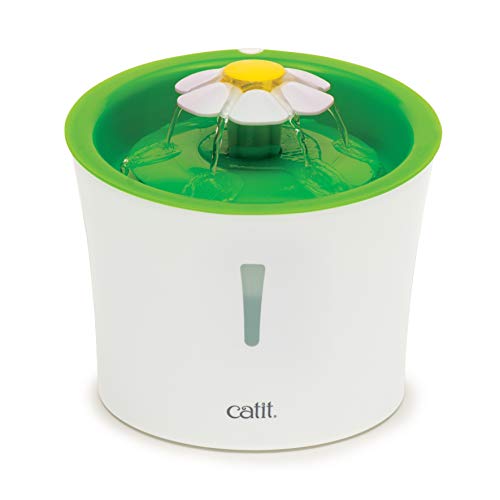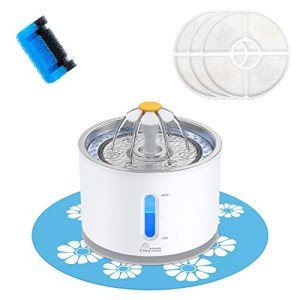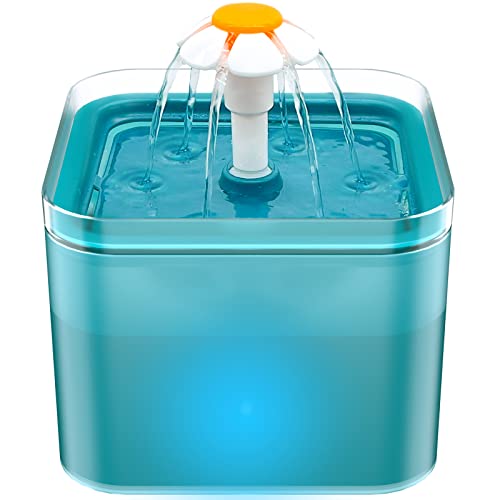The scene is familiar to many cat owners: a fluffy feline sprawled luxuriously on the sofa, only to rise and leave behind a generous coating of fur. The grooming battle begins. Armed with a brush that resembles a medieval torture device, the owner approaches, met with a hiss, a swat, and a swift retreat under the furniture. This isn't just a minor inconvenience; it's a core conflict. Cats need grooming, but they often despise the process. It’s a stand-off, a furry stalemate. But what if there was a way to bridge this gap, to transform a dreaded chore into a moment of connection? What if the very tool used for grooming could become a source of comfort and purrs? Gentle grooming gloves offer more than just fur removal; they provide a pathway to a stronger, happier relationship with your cat by turning grooming into a positive, enjoyable ritual. This will explore the world of feline grooming, the challenges, the solutions, and the remarkable transformation that grooming gloves can bring about.
Cats are meticulous creatures, renowned for their self-grooming habits. Spend any amount of time observing a cat, and you'll witness the intricate ritual of licking, smoothing, and perfecting their coat. This isn't mere vanity; it's a biological imperative. Grooming serves multiple crucial functions. It removes loose fur, dirt, and debris, keeping the coat clean and healthy. It distributes natural oils, providing insulation and waterproofing. It even serves as a form of scent marking, reinforcing a cat's sense of territory and security. The act of licking itself is stimulating, releasing endorphins and promoting a sense of well-being. Watch a cat groom another cat, and you'll see the social bonding aspect, a display of affection and trust.
However, even the most dedicated self-groomer can't always manage alone. Long-haired breeds, in particular, are prone to matting, those dense clumps of fur that can be painful and even lead to skin infections. All cats, regardless of coat length, can struggle to reach certain areas, like their backs and behind their ears. And then there's the dreaded hairball. As cats groom themselves, they ingest loose fur, which can accumulate in the stomach and form a hairball. While occasional hairballs are normal, frequent vomiting can be a sign of excessive shedding or underlying health issues. This is where human intervention becomes essential. We need to assist our feline companions in maintaining a healthy coat, preventing mats, and minimizing hairballs.
But here's where the conflict often arises. From a cat's perspective, grooming can be a confusing and even frightening experience. Think about the sensation of a traditional brush. The bristles, even if designed to be gentle, can still pull on the fur, creating discomfort. Metal combs can feel cold and harsh against sensitive skin. The sound of clippers or electric grooming tools can be terrifying. Cats have incredibly sensitive skin and whiskers, which act as sensory receptors, picking up even the slightest vibrations. A seemingly innocuous brush can feel like a giant, prickly monster. Then the negative experience is cemented.
This is where gentle grooming gloves step in, changing the narrative of cat grooming. Rather than mimicking a foreign, potentially threatening object, grooming gloves replicate the feeling of being petted, or even the comforting sensation of being licked by another cat. This is the key to their success: they tap into a cat's natural instincts and preferences. The soft, flexible material, often silicone or rubber, conforms to the cat's body, providing a gentle massage-like experience. The nodules or bumps on the gloves are designed to effectively trap loose fur without pulling or tugging.
Grooming gloves aren't just about removing fur; they offer a holistic approach to feline well-being. The gentle pressure of the gloves stimulates blood circulation in the skin, promoting healthy hair growth. The action of stroking distributes natural oils throughout the coat, creating a natural shine and preventing dryness. And, crucially, the gloves significantly reduce the amount of loose fur ingested by the cat, leading to fewer hairballs. But the benefits extend far beyond the physical. The act of grooming with gloves can dramatically reduce stress and anxiety for both the cat and the owner. For the cat, the experience transforms from a frightening ordeal to a pleasurable petting session. The purring often starts, a clear indication of contentment and relaxation. For the owner, the struggle of restraining a squirming, unhappy cat is replaced with the satisfaction of providing comfort and care.
Regular grooming with gloves also provides a valuable opportunity for early health detection. As you stroke your cat, you can feel for any unusual lumps, bumps, or areas of tenderness. You can check for skin irritations, fleas, or ticks. Early detection of these issues can make a significant difference in your cat's health and well-being. And perhaps most importantly, grooming with gloves strengthens the bond between you and your cat. It's a time for physical closeness, positive interaction, and shared affection. It transforms a necessary chore into a cherished ritual, a moment of connection in a busy world.
Choosing the right grooming gloves is crucial to maximizing their effectiveness and ensuring your cat's comfort. The market offers a variety of options, so it's important to consider a few key factors. First, look at the materials. Silicone and rubber are popular choices, known for their durability, flexibility, and ease of cleaning. Some gloves feature a combination of materials, such as a mesh backing for breathability and silicone nodules for fur removal. If your cat has sensitive skin, opt for gloves made from hypoallergenic materials.
Consider the design of the nodules. Some gloves have short, dense nodules, while others have longer, more widely spaced ones. Shorter nodules are generally better for short-haired cats, while longer nodules can be more effective for reaching through the thicker fur of long-haired breeds. The density of the nodules also affects the amount of fur collected. The wrist closure is another important feature. Look for gloves with adjustable straps, such as Velcro or elastic, to ensure a secure and comfortable fit. This will prevent the gloves from slipping off during grooming and allow you to adjust the pressure as needed. Some gloves are designed as a full glove, covering the entire hand, while others are mitten-style, leaving the fingertips exposed. The choice often comes down to personal preference, but a full glove can provide more coverage and control.
Before you purchase, take the time to read reviews from other cat owners. Their experiences can provide valuable insights into the effectiveness, durability, and comfort of different glove models. It is important, obviously, to choose the right size.
Turning grooming into a positive experience requires patience, understanding, and a gentle approach. The key is to introduce the gloves slowly and gradually, associating them with positive reinforcement. Start by simply placing the gloves near your cat, allowing them to sniff and investigate them. Don't force anything. Let your cat become familiar with the scent and appearance of the gloves. Next, try gently stroking your cat with the gloves on, starting with areas where they enjoy being petted, such as their chin, cheeks, or back. Keep these initial interactions short and sweet, just a few strokes at a time. Offer treats, praise, and plenty of positive verbal reinforcement. The goal is to create a positive association with the gloves.
Gradually increase the duration of the grooming sessions, always paying close attention to your cat's body language. If they show any signs of discomfort, such as flattening their ears, twitching their tail, or trying to move away, stop immediately. Never force the grooming process. As your cat becomes more comfortable, you can start to groom other areas of their body, such as their sides, belly, and legs. Always groom in the direction of hair growth, using light, even pressure. Avoid pulling or tugging on the fur.
When dealing with mats or tangles, be extra gentle. Try to work them out with your fingers first, using the gloves to gently separate the strands of fur. If the mat is too stubborn, you may need to carefully trim it with scissors, but be extremely cautious to avoid cutting the skin. After each grooming session, clean the gloves thoroughly. Remove any loose fur, and wash the gloves according to the manufacturer's instructions. Some gloves are machine washable, while others require hand washing.
The frequency of grooming will depend on your cat's coat type and shedding level. Short-haired cats may only need to be groomed once or twice a week, while long-haired cats may require daily grooming to prevent mats. Pay attention to your cat's individual needs and adjust the grooming schedule accordingly. The important thing is to make grooming a regular part of your cat's routine, a consistent and predictable experience. It's not just about removing fur; it's about building trust and strengthening your bond.
For some cats, particularly those with a history of negative grooming experiences, the transition to glove grooming may take time and extra patience. If your cat is extremely fearful of being touched, start with very brief, gentle touches on less sensitive areas. Use high-value treats, such as small pieces of cooked chicken or tuna, to reward your cat for tolerating even the slightest touch. Gradually increase the duration and intensity of the touch, always associating it with positive reinforcement. This process, known as desensitization and counter-conditioning, can help your cat overcome their fear and learn to associate grooming with positive experiences. These gloves are generally great for most cat breeds.
Cleaning your grooming gloves should be a regular part of your routine. Regularly removing the collected fur from the glove's surface is the first step. For more thorough cleaning, most silicone or rubber gloves can be hand-washed with warm water and mild soap. Some are even machine washable, but always check the manufacturer's instructions. Allow the gloves to air dry completely before storing them.
While grooming gloves are a fantastic tool for most cats, they may not be a perfect solution for every feline. Some cats, despite your best efforts, may simply not tolerate being groomed, even with gloves. If your cat continues to show extreme fear or aggression during grooming, it's best to consult with a veterinarian or a professional groomer. They can offer alternative grooming methods or address any underlying medical or behavioral issues that may be contributing to the problem.
Sometimes it will be smart to combine your gloves with other tools. For example, after using the gloves, you might finish with a soft brush to further smooth the coat and remove any remaining loose fur. The key is to introduce any new tools gradually and positively, just as you did with the gloves. For senior cats or cats with special needs, grooming requires extra care and consideration. Older cats may have arthritis or other mobility issues that make it difficult for them to groom themselves. They may also have thinner skin and be more sensitive to pressure. Use extra gentle strokes and avoid putting pressure on any painful joints. Cats with certain medical conditions, such as skin allergies or hyperthyroidism, may require specialized grooming techniques or products. Consult with your veterinarian for guidance on how to best care for your cat's specific needs.
Excessive shedding can be a concern for many cat owners. While some shedding is normal, excessive hair loss can be a sign of an underlying issue. Dietary factors, such as a deficiency in omega-3 fatty acids, can contribute to shedding. Environmental factors, such as dry air, can also play a role. If you notice excessive shedding, consult with your veterinarian to rule out any medical causes. They may recommend dietary changes or supplements to improve your cat's coat health.
In some cases, even with regular grooming at home, professional grooming may be necessary. If your cat has severe matting that you cannot safely remove yourself, or if they have behavioral issues that make grooming difficult, a professional groomer can help. Look for a groomer who is experienced in handling cats and uses gentle, positive techniques.
Grooming gloves represent a significant shift in the way we approach cat care. They move away from the traditional, often stressful, methods of brushing and combing, and embrace a more natural, intuitive approach. By mimicking the sensation of being petted, grooming gloves transform a necessary chore into a pleasurable bonding experience. The benefits are numerous: reduced stress for both cat and owner, improved coat and skin health, fewer hairballs, and a stronger, more connected relationship. It's an investment in your cat's well-being, a way to show your love and care in a tangible way. So, ditch the brushes and combs that inspire fear and dread. Embrace the gentle power of grooming gloves and watch your cat transform from a furry, shedding creature of avoidance into a purring, contented companion. The journey from feline frights to purrfect pampering is within reach, one gentle stroke at a time. It truly is a way to bring more joy and peace into the life you share with your beloved cat.







